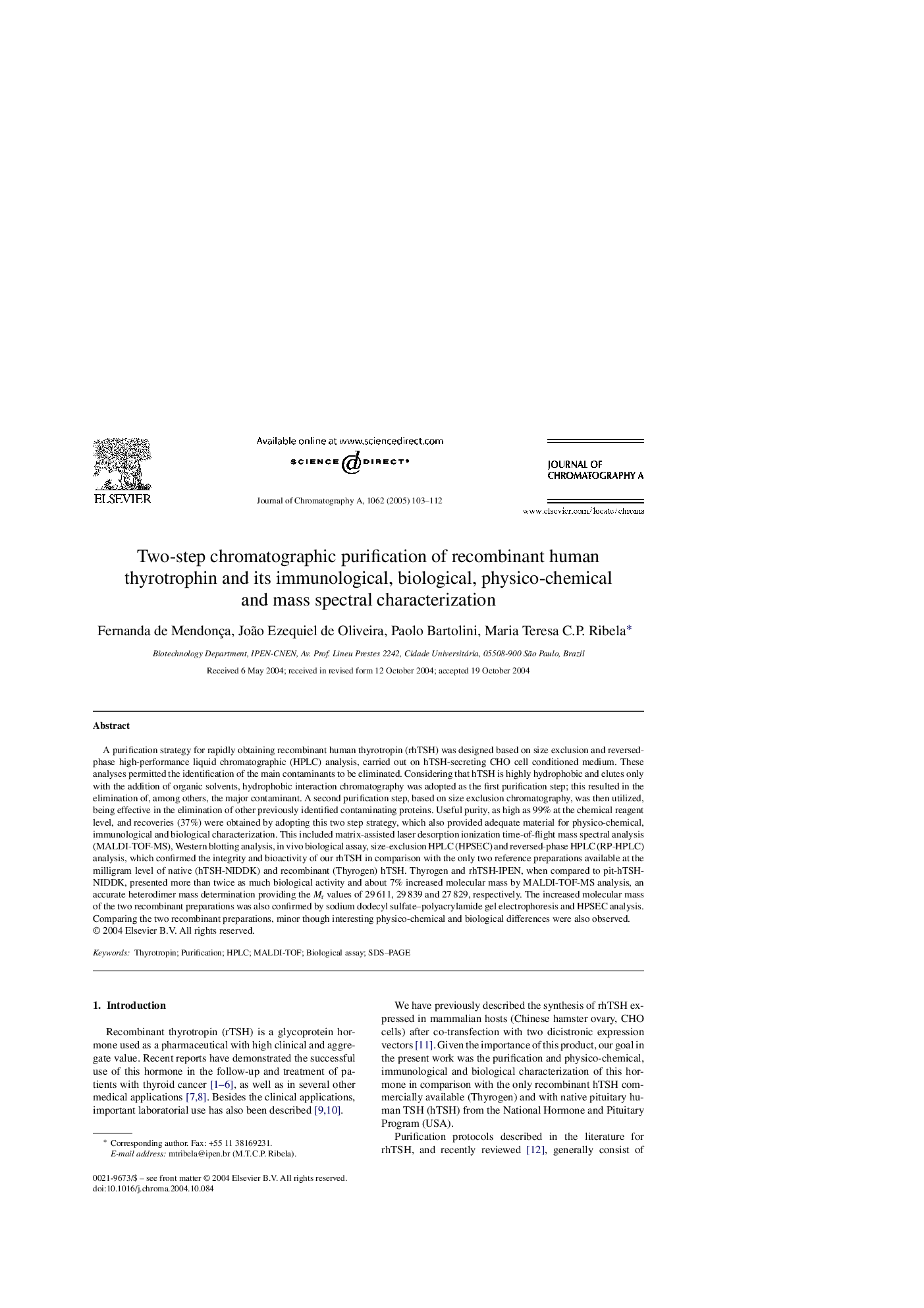| Article ID | Journal | Published Year | Pages | File Type |
|---|---|---|---|---|
| 10548245 | Journal of Chromatography A | 2005 | 10 Pages |
Abstract
A purification strategy for rapidly obtaining recombinant human thyrotropin (rhTSH) was designed based on size exclusion and reversed-phase high-performance liquid chromatographic (HPLC) analysis, carried out on hTSH-secreting CHO cell conditioned medium. These analyses permitted the identification of the main contaminants to be eliminated. Considering that hTSH is highly hydrophobic and elutes only with the addition of organic solvents, hydrophobic interaction chromatography was adopted as the first purification step; this resulted in the elimination of, among others, the major contaminant. A second purification step, based on size exclusion chromatography, was then utilized, being effective in the elimination of other previously identified contaminating proteins. Useful purity, as high as 99% at the chemical reagent level, and recoveries (37%) were obtained by adopting this two step strategy, which also provided adequate material for physico-chemical, immunological and biological characterization. This included matrix-assisted laser desorption ionization time-of-flight mass spectral analysis (MALDI-TOF-MS), Western blotting analysis, in vivo biological assay, size-exclusion HPLC (HPSEC) and reversed-phase HPLC (RP-HPLC) analysis, which confirmed the integrity and bioactivity of our rhTSH in comparison with the only two reference preparations available at the milligram level of native (hTSH-NIDDK) and recombinant (Thyrogen) hTSH. Thyrogen and rhTSH-IPEN, when compared to pit-hTSH-NIDDK, presented more than twice as much biological activity and about 7% increased molecular mass by MALDI-TOF-MS analysis, an accurate heterodimer mass determination providing the Mr values of 29Â 611, 29Â 839 and 27Â 829, respectively. The increased molecular mass of the two recombinant preparations was also confirmed by sodium dodecyl sulfate-polyacrylamide gel electrophoresis and HPSEC analysis. Comparing the two recombinant preparations, minor though interesting physico-chemical and biological differences were also observed.
Related Topics
Physical Sciences and Engineering
Chemistry
Analytical Chemistry
Authors
Fernanda de Mendonça, João Ezequiel de Oliveira, Paolo Bartolini, Maria Teresa C.P. Ribela,
